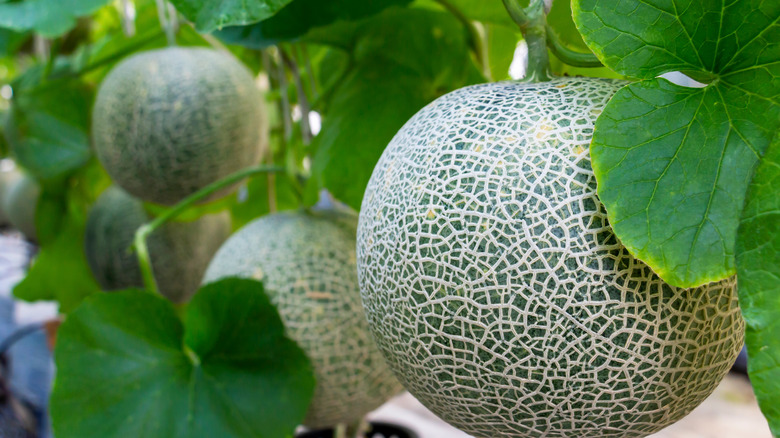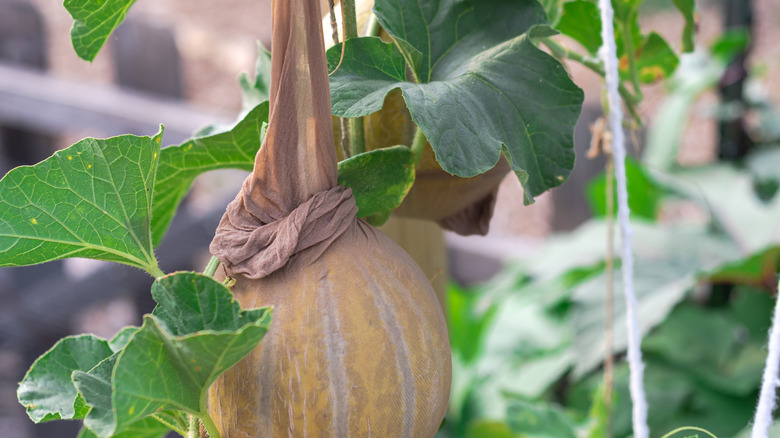Why You Should Grow Cantaloupe Vertically (& Tips To Boost Your Harvest)
We may receive a commission on purchases made from links.
With urban gardening gaining popularity fast, more and more gardeners are adopting space-efficient ways to design their growing space. Vertical gardening allows you to make good use of your area while still growing the plants and foods you love, whether you're working in small plotted areas or an apartment balcony. From tomatoes to cucumbers, and even roses, trellises are popular choices for vertical planting because they provide a supportive structure.
Planting cantaloupes vertically could also improve the health and yield of your crop because it allows you to plant and harvest more than you could normally compared to letting them sprawl out over the ground. Having your crops' vines climb up a supportive trellis won't only protect them from crawling pests but will also help to keep the foliage dry and healthy, providing good air circulation, a common problem for the knotted tangles that become cantaloupe vines.
How to plant cantaloupes on a trellis
For a ground-level trellis, start by working about an inch of compost into the top 4 inches of soil next to the trellis. This simple process improves the structure and nutrient level of the soil by adding your compost to the surface and using a shovel or hand trowel to blend it in while loosening the soil.
At this point, you can secure your trellis in place and plant your seeds in groups of three an inch deep into the soil, making sure they're at least 12-18 inches apart. This will give them enough space to grow while enjoying good air circulation but it will also distribute the weight of the fruit evenly across your trellis.
After planting, you can protect your plants from pests by mulching the soil around with straw to deter snails and maintain good warmth and moisture below the surface. Cover your plants with netting to avoid flying pests, but this will need to be removed once your vines start flowering to allow pollinators to do their magic.
Even though the leaves are susceptible to fungal diseases, the vines don't appreciate drought. Ensure a good balance by watering the soil directly without wetting any leaves, or water earlier in the morning to give the leaves time to dry.
Top tips when planting cantaloupes vertically
Many fruits that can be grown on trellises are lightweight and can be held up by taller companion plants. Cantaloupes, however, are larger and will need a sturdier structure to support them as they grow. If you can't find a trellis on the market that inspires enough confidence, you can build one at home that'd be better suited to the weight. Slanting certain trellises is one way to balance the weight, which will give your plants even more sun exposure. Consider also using old nylon stockings to create slings under the melons that will hold them up like hammocks.
You can train your vines by securing them with soft ties daily to ensure that they're not making contact with the ground. You might be tempted to listen to old gardener tales that tell you to pinch vines and foliage to make your harvest sweeter or juicier, but that simply isn't true. The more foliage your cantaloupes have, the sweeter they're likely to be.
There is also a good selection of companion plants you can plant with cantaloupes, like beans, to help maintain nitrogen in the soil. Corn is a great companion plant for vining crops, but maybe not when it's a heavier fruit like cantaloupes. You can also attract pollinating predator insects with dill and marigolds, which saves you the work of repelling melon aphids.


